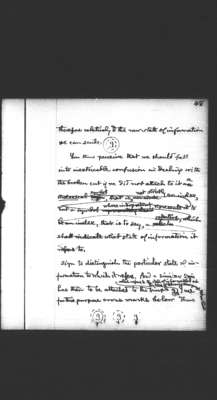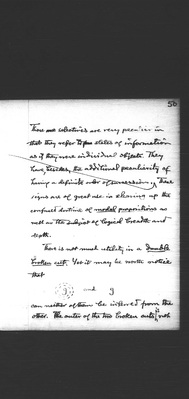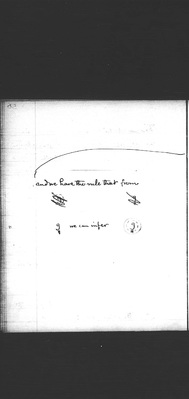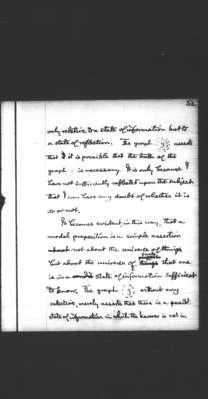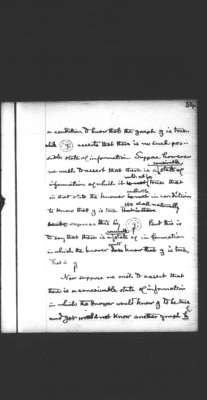Pages
61
48
therefore relatively to the new state of information we can scribe [diagram]
You thus perceive that we should fall into inextricable confusion in dealing with the broken cut if we did not attach to it a indexical symbol, that is, not strictly an index, but a symbol whose interpretant represents it to be an index, that is to say, a selective, which shall indicate what state of information it refers to. sign to distinguish the particular state of information to which it refers. And a similar sign has then to be attached to the simple g, which refers to the state of information at the time of learning that graph to be true. I use for this purpose cross marks below. Thus: [diagrams]
62
50
These selectives are very peculiar in that they refer to states of information as if they were individual objects. They have, besides, the additional peculiarity of having a definite order of succession. [insertion here from facing page] These signs are of great use in cleaning up the confused doctrine of modal propositions as well as the subject of logical breadth and depth.
There is not much utility in a double broken cut. Yet it may be worth notice that [diagram] and [diagram] can neither of them be inferred from the other. The outer of the two broken cuts is not
64
52
only relative to a state of information but to a state of reflection. The graph [diagram] asserts that it is possible that the truth of the graph g is necessary. It is only because I have not sufficiently reflected upon the subject that I can have any doubt of whether it is so or not.
It becomes evident, in this way, that a modal proposition is a simple assertion not about the universe of things but about the universe of facts that one is in a state of information sufficient to know. The graph [diagram] without any selective, merely asserts that there is a possible state of information in which the knower is not in
65
54
a condition to know that the graph g is true, while [diagram] asserts that there is no such possible state of information. Suppose however we wish to assert that there is a conceivable state of information of which it would not be true that in that state the knower would not be in condition to know that g is true. We shall naturally express this by [diagram] . But this is to say that there is a conceivable state of information in which the knower would know that g is true. That is [diagram].
Now suppose we wish to assert that there is a conceivable state of information in which the knower would know g to be true and yet would not know another graph h
